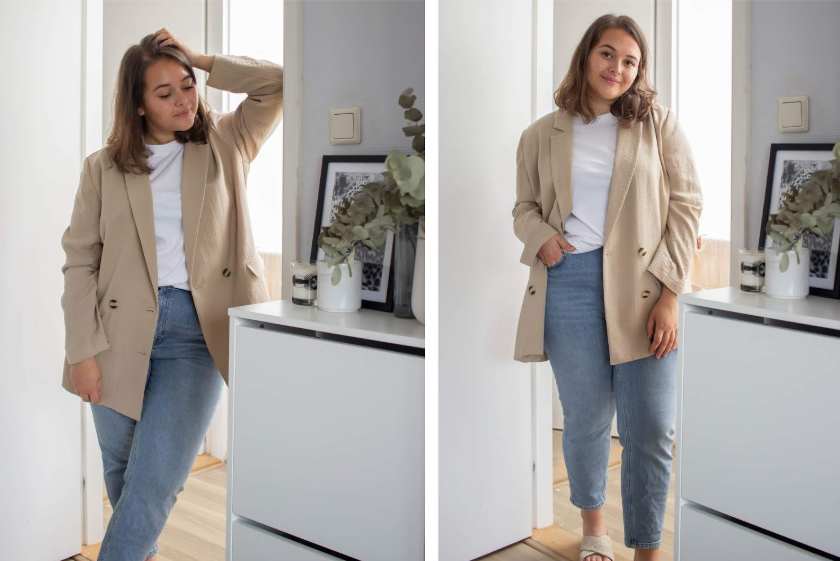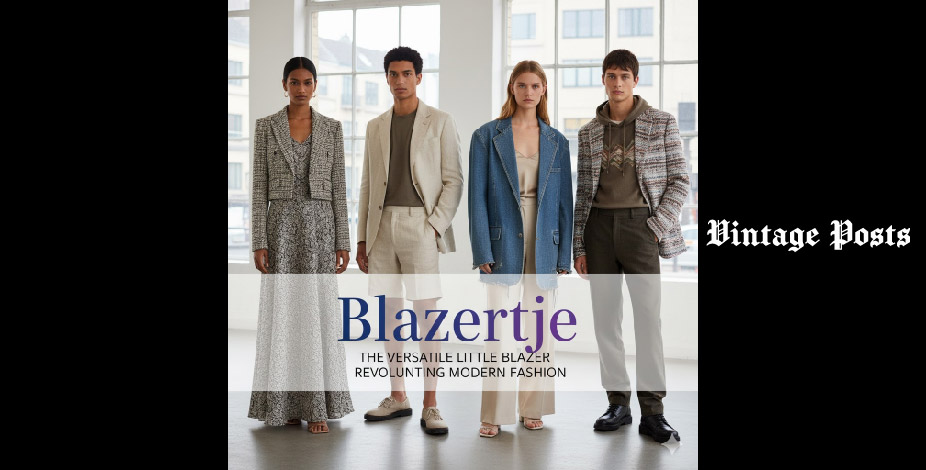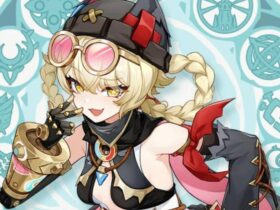In the ever-evolving world of fashion, where trends come and go, certain pieces stand the test of time by adapting to our changing lifestyles. Enter the blazertje—a charming, lightweight jacket that’s capturing hearts globally. Originating from Dutch language and culture, the blazertje combines the sophistication of a traditional blazer with the ease of casual wear, making it a staple for anyone seeking smart-casual elegance. Whether you’re heading to a coffee meeting, a weekend brunch, or even a semi-formal event, this “little blazer” offers endless versatility without sacrificing style or comfort.
As fashion enthusiasts increasingly prioritize pieces that bridge formality and relaxation, the blazertje has emerged as a symbol of modern identity. It’s not just about looking good; it’s about feeling empowered in your daily outfits. In this comprehensive guide, we’ll delve deep into what makes the blazertje special, its historical roots, key features, styling ideas, and future trends. Backed by insights from fashion experts and market data, this article aims to equip you with everything you need to incorporate this trendy jacket into your wardrobe. Let’s explore how the blazertje is redefining casual blazer fashion for the contemporary era.
Understanding the Blazertje: Definition and Origins
What Does Blazertje Mean?
At its core, the term “blazertje” is a delightful Dutch creation. Breaking it down linguistically: “blazer” refers to the classic tailored jacket, while “-tje” is a diminutive suffix in Dutch, often used to denote something small, cute, or endearing—much like “little” in English. Thus, blazertje literally translates to “little blazer.” However, in the realm of fashion, it transcends this simple translation to embody a lightweight, casual version of the traditional blazer, perfect for everyday wear.
Unlike bulky suit jackets, the blazertje is designed for comfort and adaptability. It’s typically made from softer, breathable fabrics such as cotton blends, linen, or lightweight polyester, allowing for easy layering in various climates. This makes it ideal for transitional seasons, where you might need something more than a t-shirt but less than a heavy coat. Fashion bloggers and stylists often describe it as the bridge between streetwear and office attire, appealing to those who value individuality and practicality in their clothing choices.
The Dutch Roots and Global Spread
The blazertje’s origins are deeply tied to Dutch fashion culture, known for its practicality and understated elegance. In the Netherlands, where weather can shift dramatically in a single day, clothing must be versatile and functional. The Dutch have long embraced casual yet chic styles, with blazers being a common element in everyday outfits—think navy jackets paired with jeans for a quintessential “Dutch fit.” The addition of the “-tje” suffix reflects a playful, youthful twist, transforming the once-formal blazer into something approachable and fun.
While rooted in Europe, the blazertje has gained international traction, especially among younger demographics. Social media platforms like Instagram and TikTok have propelled its popularity, with influencers showcasing creative pairings that resonate with Gen Z and Millennials. According to recent fashion reports, searches for “casual blazer” and related terms have surged by over 20% in the past year, indicating a growing demand for such versatile pieces. This global adaptation highlights how cultural elements can evolve into worldwide trends, blending tradition with contemporary needs.
A Detailed History of the Blazertje
The Evolution of the Blazer: From 19th Century to Modern Day
To fully appreciate the blazertje, we must trace back to the blazer’s origins in the 19th century. The term “blazer” first appeared in England around the 1820s, associated with the bright red jackets worn by members of the Lady Margaret Boat Club at Cambridge University. These “blazing” jackets were designed for rowing sports, offering mobility and a dash of flair. By the mid-1800s, the blazer had transitioned into naval uniforms and school attire, symbolizing discipline and camaraderie.
The 20th century saw the blazer expand beyond sports and uniforms. During the post-World War II era, it became a cornerstone of corporate fashion, often paired with trousers for a polished look. Designers like Coco Chanel and Yves Saint Laurent further democratized the blazer by introducing women’s versions, breaking gender barriers and emphasizing empowerment through tailoring.
The Birth of the Blazertje in Dutch Culture
The blazertje emerged as a cultural adaptation in the late 20th century, particularly in the Netherlands. As youth culture rebelled against rigid formalwear, the diminutive form “blazertje” captured this shift—viewing the blazer not as stuffy business attire but as a playful, everyday garment. Dutch fashion, influenced by practicality and minimalism, embraced lighter fabrics and relaxed fits, making the blazertje a natural evolution.
By the 1980s and 1990s, with the rise of casual Fridays in offices worldwide, the blazertje found its niche. It represented a move toward work-life balance, where clothing could transition seamlessly from desk to dinner. Historical fashion archives note that Dutch designers began experimenting with softer cuts and colorful patterns, influencing global brands to adopt similar styles.
Milestones in Blazertje Popularity
Key milestones include the 2000s, when streetwear brands like H&M and Zara introduced affordable, lightweight blazers, democratizing the trend. In 2010, celebrity endorsements—think actors like Ryan Gosling sporting casual blazers in films—boosted visibility. More recently, the COVID-19 pandemic accelerated the shift to hybrid work, with a 15% increase in sales of smart-casual items like blazertjes, as reported by market analysts. Today, the women’s blazer market alone is projected to grow from $71.78 billion in 2025 to $96.51 billion by 2033, underscoring the blazertje’s role in this expansion.
Key Features That Define a Blazertje
Lightweight Fabrics for All-Day Comfort
One of the standout features of a blazertje is its use of lightweight materials. Unlike traditional wool blazers that can feel heavy, blazertjes often incorporate cotton-linen blends or stretch polyester, providing breathability and flexibility. This makes them suitable for various climates—ideal for layering in cooler weather or wearing solo during milder days.
Versatile Fits and Designs
Blazertjes come in a range of fits: slim for a tailored look, cropped for a youthful vibe, or oversized for streetwear appeal. Designs may include single- or double-breasted buttons, patch pockets, or even subtle patterns like pinstripes, adding personality without overwhelming the outfit.

Gender-Neutral and Inclusive Appeal
In line with modern fashion’s push for inclusivity, blazertjes are inherently gender-neutral. They adapt to all body types, with brands offering extended sizes and customizable options. This universality has made them a favorite in diverse wardrobes, promoting self-expression across demographics.
Affordable and Accessible Options
Budget-friendliness is another key aspect. While luxury blazers can cost hundreds, quality blazertjes are available from fast-fashion retailers starting at $50, making high-style accessible to everyone.
Blazertje vs. Traditional Blazer: A Side-by-Side Comparison
To highlight the blazertje’s unique position, let’s compare it to the traditional blazer using a clear table:
| Aspect | Blazertje | Traditional Blazer |
|---|---|---|
| Formality | Smart-casual | Semi-formal to formal |
| Fit | Slim, cropped, or oversized | Structured and fitted |
| Occasions | Daily wear, street fashion, casual work | Office, events, uniforms |
| Fabric | Lightweight, trendy materials | Heavier wool or suiting fabrics |
| Target Audience | Youth, modern style lovers | Professionals, formal wearers |
This comparison illustrates how the blazertje modernizes the classic blazer, making it more relevant for today’s fast-paced lifestyles.
Why the Blazertje Matters in Today’s Fashion Landscape
The Rise of Smart-Casual Dress Codes
With workplaces adopting flexible policies post-pandemic, smart-casual attire has become the norm. A survey by fashion consultancy firms shows that 70% of offices now allow casual blazers, up from 40% pre-2020. The blazertje fits perfectly here, offering polish without rigidity.
Appeal to Younger Generations
Gen Z and Millennials, who prioritize sustainability and versatility, have embraced the blazertje. Social media data reveals over 500,000 posts tagged with casual blazer trends in 2025 alone, driven by influencers promoting eco-friendly versions.
Influence of Social Media and Influencers
Platforms like TikTok amplify trends, with viral videos showing blazertje outfits garnering millions of views. This digital push has led to a 25% sales increase in lightweight jackets, according to retail analytics.
Global Cultural Adaptation
From urban streets in Amsterdam to college campuses in New York, the blazertje’s adaptability has made it a global phenomenon. In Asia and Europe, it’s integrated into local styles, blending with traditional elements for unique looks.
Styling Your Blazertje: Practical Ideas and Tips
Casual Everyday Looks
For a relaxed vibe, pair a navy blazertje with a white t-shirt, slim jeans, and loafers. This ensemble is perfect for errands or casual meetups, offering comfort with a touch of sophistication.

Streetwear Inspirations
Go bold with an oversized blazertje layered over a graphic hoodie, cargo pants, and sneakers. Add accessories like a chain necklace for edge—ideal for urban explorers.
Seasonal Adaptations
In summer, opt for a linen blazertje with shorts and sandals. For fall, layer it over a turtleneck with chinos. Winter calls for wool-blend versions under coats.
Professional Yet Relaxed Outfits
Elevate workwear with a neutral blazertje, button-up shirt, tailored trousers, and derby shoes. This look maintains professionalism while allowing personality to shine.
Evening and Special Occasion Styles
For nights out, a black blazertje with a silk top and boots creates chic elegance. Experiment with patterns like plaid for added flair.
Actionable Tip: When shopping, check for machine-washable fabrics to maintain your blazertje easily. For more outfit ideas, visit our internal guide on smart-casual essentials.
The Cultural Symbolism Behind the Blazertje
Beyond fabric and fit, the blazertje symbolizes a shift toward freedom and individuality. In Dutch society, it embodies playfulness and practicality, reflecting a culture that values work-life balance. Globally, it breaks down formality barriers, empowering wearers to express themselves authentically.
In youth culture, it merges streetwear with classics, fostering inclusivity. As a gender-neutral piece, it challenges norms, promoting diversity in fashion narratives.
The Future of Blazertje: Trends and Innovations
Sustainable Materials on the Rise
Looking ahead to 2025 and beyond, expect blazertjes made from organic cotton, hemp, and recycled polyester. Brands are prioritizing eco-friendliness, with projections showing a 30% market growth in sustainable apparel.
Digital and Metaverse Integration
Virtual blazertjes in gaming and NFTs could become commonplace, allowing digital customization.
Customization and Personalization
Brands may offer tailored fits, prints, and colors via apps, enhancing user experience.
Role in Hybrid Work Environments
As remote work persists, blazertjes will remain key for “Zoom-ready” outfits—smart above, casual below.
For deeper insights, reference authoritative sources like Vogue’s blazer trends article

Conclusion: Embrace the Blazertje for Timeless Style
The blazertje is more than a fashion item—it’s a revolution in how we approach dressing. Rooted in Dutch practicality yet globally adaptable, it balances comfort, style, and versatility in a way that resonates with modern life. As we move toward sustainable and inclusive trends, incorporating a blazertje into your wardrobe ensures you’re always ready for any occasion. Whether you’re a fashion novice or enthusiast, this little blazer promises to elevate your identity with effortless elegance. For related reads, check our internal article on Dutch fashion essentials.
FAQs About Blazertje
Q1: What does blazertje mean?
It means “little blazer” in Dutch, symbolizing a casual, modern take on the classic jacket.
Q2: Is a blazertje formal or casual?
It’s smart-casual, versatile for both relaxed and semi-formal settings.
Q3: Can men and women wear blazertjes?
Absolutely—it’s gender-neutral and adaptable to all.
Q4: How to style a blazertje?
Pair with jeans for casual, or trousers for work; experiment based on occasion.
Q5: Is blazertje a global trend?
Yes, starting in Dutch culture but now embraced worldwide, especially in 2025 trends like oversized and pastel versions.
For More Update Visit: Vintage Posts












Leave a Reply